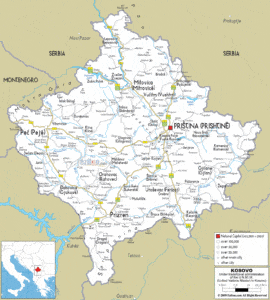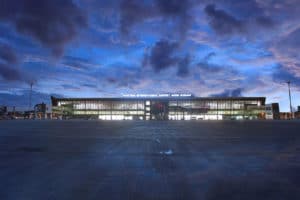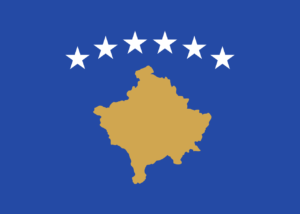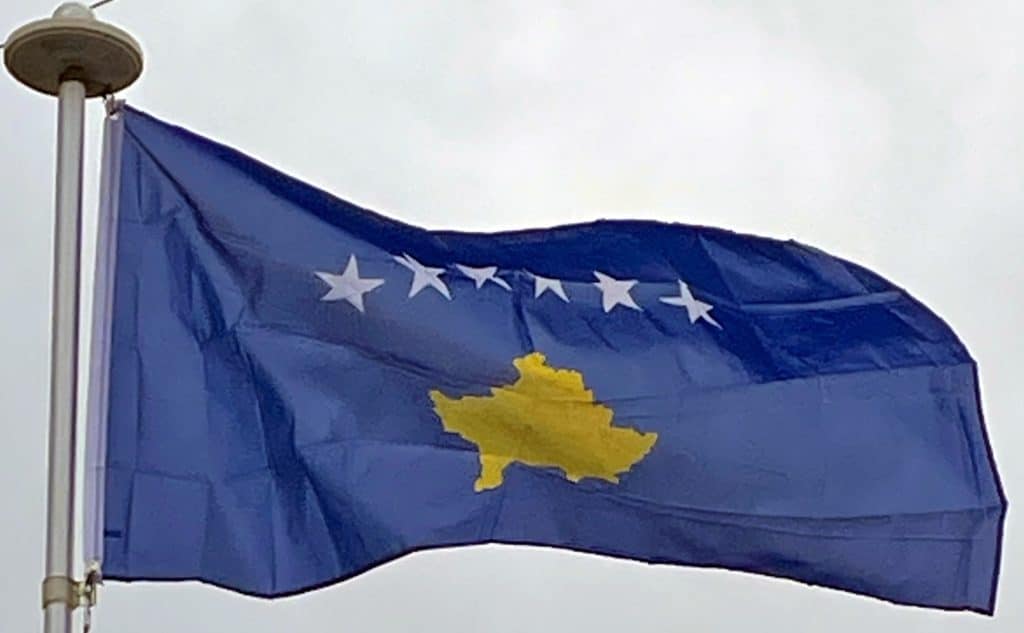
Kosovo’s largest trading partners are Albania, Italy, Switzerland, China, Germany and Turkey. The Euro is its official currency. The Government of Kosovo has signed free-trade agreements with Croatia, Bosnia and Herzegovina, Albania and North Macedonia. Kosovo is a member of CEFTA, agreed with UNMIK, and enjoys free trade with most nearby non-European Union countries.
Transportation:
Currently, there are two main motorways in Kosovo: the R7 connecting Kosovo with Albania and the R6 connecting Pristina with the Macedonian border at Elez Han. The construction of the new R7.1 Motorway began in 2017.

The R7 Motorway (part of Albania-Kosovo Highway) links Kosovo to Albania’s Adriatic coast in Durrës. Once the remaining European route (E80) from Pristina to Merdare section project will be completed, the motorway will link Kosovo through the present European route (E80) highway with the Pan-European corridor X (E75) near Niš in Serbia. The R6 Motorway is currently under construction. Forming part of the E65, it is the second motorway constructed in the region and it links the capital Pristina with the border with North Macedonia at Elez Han, which is about 20 km (12 mi) from Skopje. Construction of the motorway started in 2014 and it is going to be finished in 2018.

Pristina International Airport is located southwest of Pristina. It is Kosovo’s only international airport and the only port of entry for air travelers to Kosovo.
Flag of Kosovo:
The Assembly of Kosovo adopted the flag of the Republic of Kosovo immediately following the unilateral declaration of independence of Kosovo from Serbia of 17 February 2008. The flag design emerged from an international competition, organized by the United Nations-backed Kosovo Unity Team, which attracted almost one thousand entries. The current design was proposed by Muhamer Ibrahimi. It shows six white stars in an arc above a golden map of Kosovo, all on a blue field. The stars symbolize Kosovo’s six major ethnic groups: Albanians, Serbs, Bosniaks, Turks, Romani, and Gorani.

Before the declaration of independence, Kosovo had come under the administration of the United Nations and used the UN flag for official purposes. The Serb and Albanian populations had used their own national flags since the 1945-1992 Socialist Yugoslavia period. The Serbs use a red, blue and white tricolor, which also forms the basis of the current flag of Serbia. The Albanian population have used the flag of Albania since the 1960s as their ethnic flag. Both these flags can still be seen in use within Kosovo.
Serbia has not recognized the independence of Kosovo and claims the area as the Autonomous Province of Kosovo and Metohija. Unlike the case of the autonomous province of Vojvodina, the Serbian authorities have not adopted a unique flag to represent this claimed province, using the flag of Serbia instead.
The flag of Kosovo has a blue background, charged with a map of Kosovo and six stars. The stars are officially meant to symbolize Kosovo’s six major ethnic groups: Albanians, Serbs, Bosniaks, Turks, Romani, and Gorani. Unofficially, the stars are sometimes said to represent the six regions, which according to Albanian ultra nationalist ideology, make up Greater Albania: Albania, Kosovo, western parts of North Macedonia, parts of northern Greece, parts of Montenegro and Preševo Valley in southern Serbia. The flag of Kosovo resembles that of Bosnia and Herzegovina in terms of colors and shapes used (white stars and yellow shape of the country on a blue field). The flag is unusual among national flags in using a map as a design element; the flag of Cyprus is the only other to do so.
